30 Common Backyard Birds in Pennsylvania (With Pictures)
Last Updated on
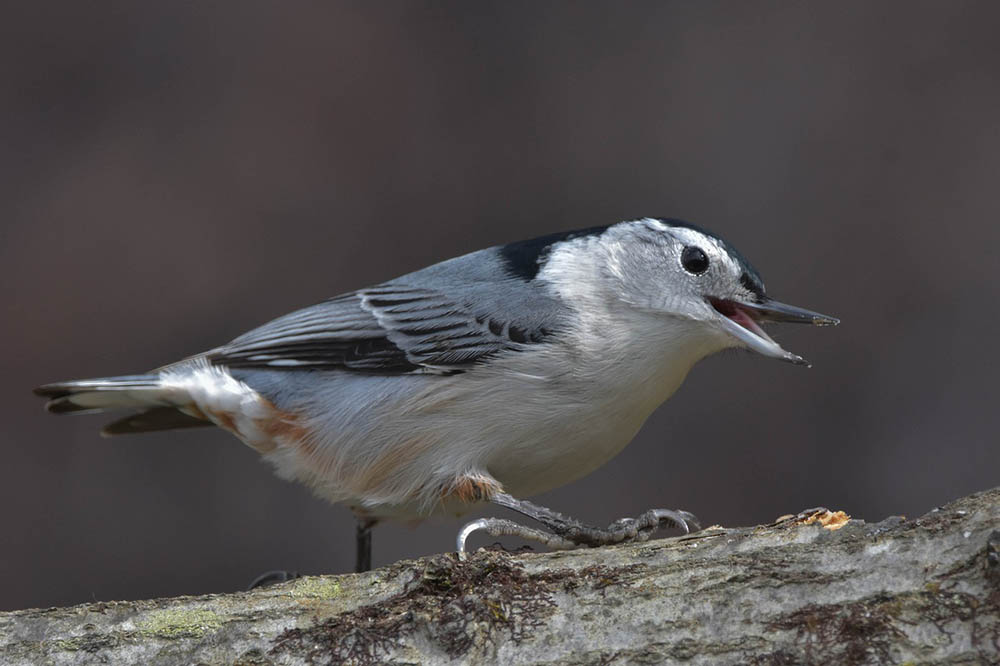
If you are a bird lover, it can be helpful to know what kind of birds are in your area. Each state has a different variety of birds, and Pennsylvania is no exception. More than 400 birds can be seen in Pennsylvania, with several that you can find all year. Keep reading, as we list 30 of the most popular varieties of Pennsylvanian backyard birds.
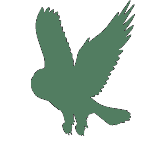
The 30 Most Common Backyard Birds in Pennsylvania
Pennsylvania Songbirds
1. Blue Jay
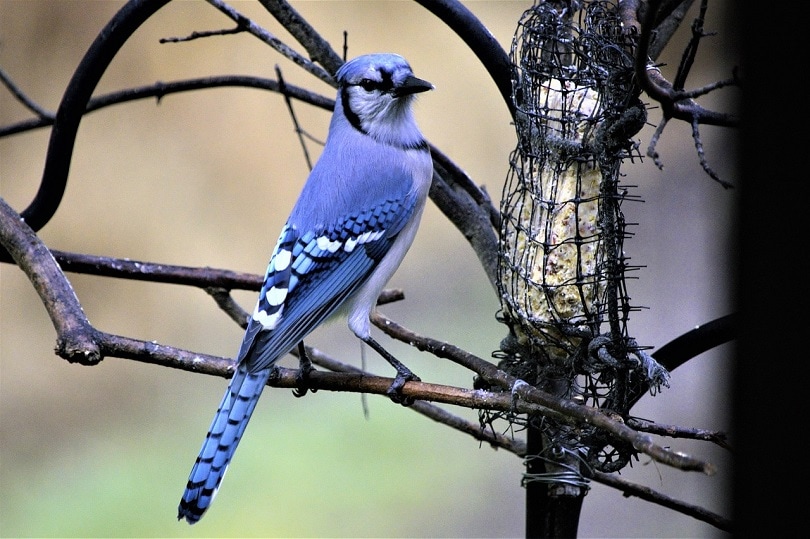
| Body Length: | 8.5–12 inches |
| Distinguishing Characteristics: | Blue color, intelligence |
The Blue Jay is a large songbird that you can find almost anywhere in the eastern United States, including Pennsylvania. It’s mostly blue with a white belly and chest and black highlights on the face, wings, and tail. These birds form tight bonds with their family members, and they like peanuts, sunflower seeds, and suet.
2. Mourning Dove
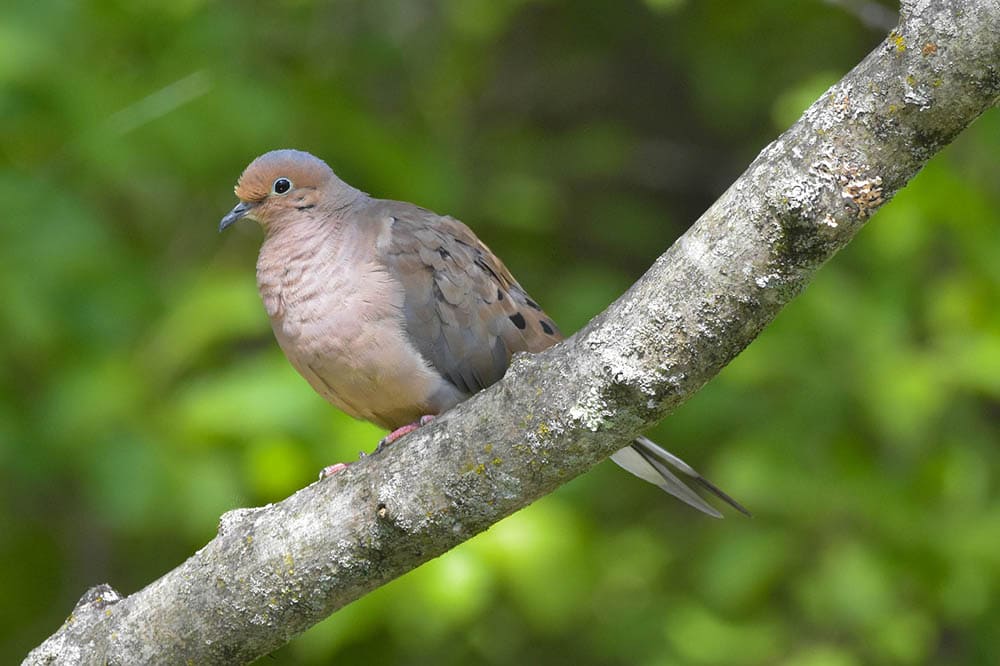
| Body Length: | 12 inches |
| Distinguishing Characteristics: | Soft call, light color |
The Mourning Dove is a bird that you can find almost anywhere in the United States, and it’s abundant in Pennsylvania. It has a soft and drawn-out song that sounds like a lament, which is likely where it gets its name. It’s a ground foraging bird that quickly picks up seeds and stores them in an internal pouch. When the pouch is full, it flies off to digest them safely. However, while it is on the ground, the Mourning Dove is particularly vulnerable to cats.
3. American Crow
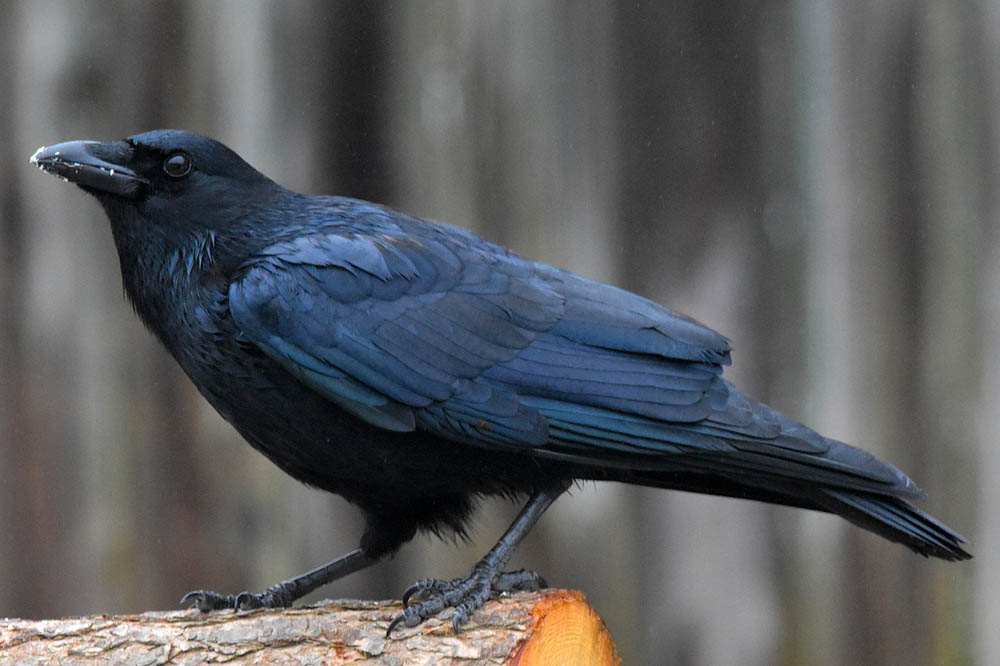
| Body Length: | 16–18 inches |
| Distinguishing Characteristics: | Large size, black color, loud call |
The American Crow is one of the easiest birds to find and identify anywhere in Pennsylvania and most of the United States. It’s extremely large, often growing to more than 17 inches, and it has an easy-to-identify call. They are intelligent birds that can adapt to many different environments, but they also damage plants, so many farmers consider them pests.
4. American Goldfinch
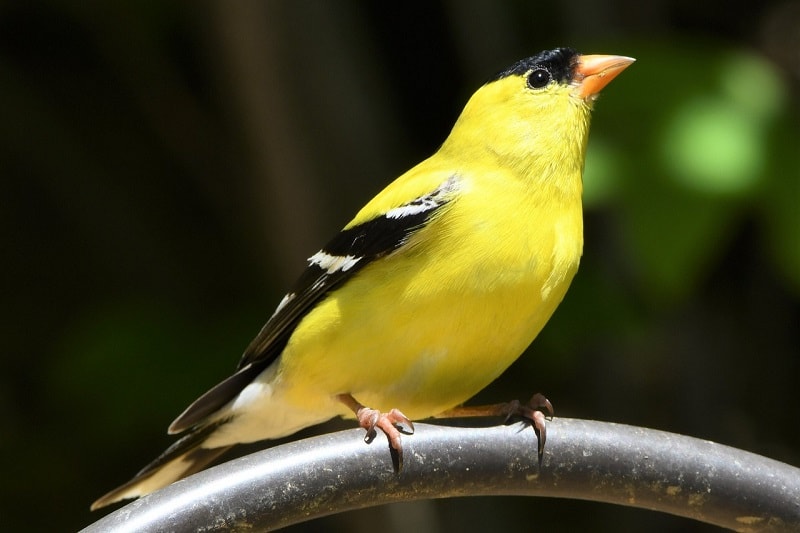
| Body Length: | 4.3–5.1 inches |
| Distinguishing Characteristics: | Bright yellow, black forehead, white highlights |
The America Goldfinch is easy to find in Pennsylvania and much of the United States. It’s a fairly small bird that can have bright-yellow coloring, especially in the breeding male. The tips of the wings and tail are black with white highlights, and while there are a few yellow birds in summer, these are the only ones that stay through the winter.
5. Tufted Titmouse
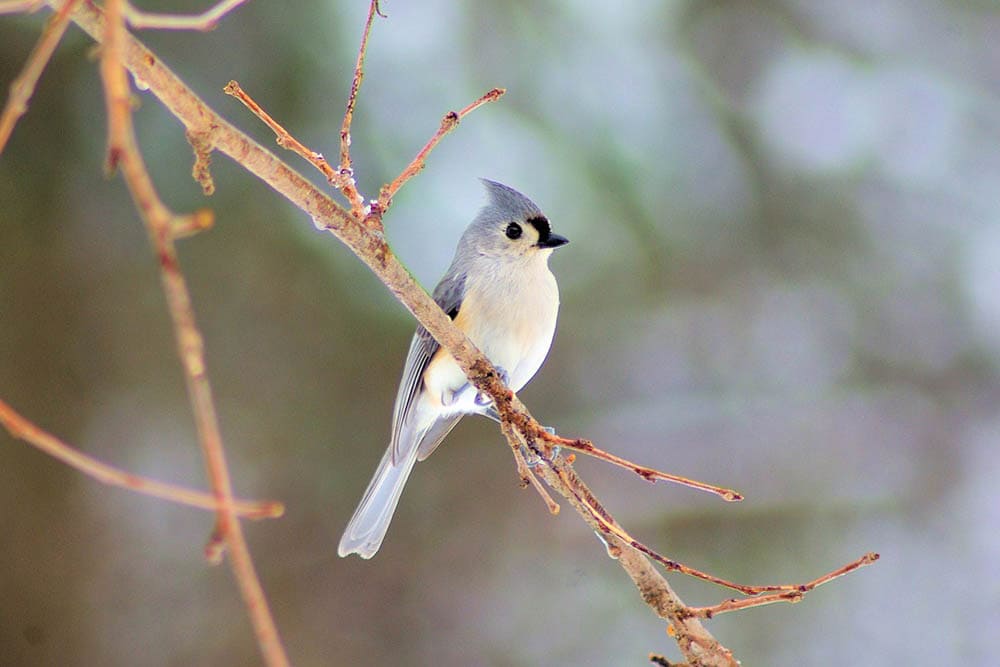
| Body Length: | 5.5–6.3 inches |
| Distinguishing Characteristics: | Tall silvery crest |
The Tufted Titmouse is a small songbird that you can find in Pennsylvania at many different bird feeders. They prefer to stay at elevations below 2,000 feet and often travel with Chickadees.
6. European Starling

| Body Length: | 7.9–9.1 inches |
| Distinguishing Characteristics: | Purplish green highlights |
The European Starling gets its name from how it looks while in flight. Their short wings make them appear as a four-pointed star from below. They’re quite large overall, with a wingspan that extends more than 1 foot. They enjoy living around human settlements, and you can usually find them sitting on power wires.
7. White-Breasted Nuthatch

| Body Length: | 5–6.1 inches |
| Distinguishing Characteristics: | White breast, blue body |
The White-Breasted Nuthatch is a no-necked bird with a long pointy bill. It has blue feathers across its back, which may trick inexperienced watchers into thinking that it’s a Blue Jay. However, it also has rusty spots near the tail that you can see from below. You can find them all over Pennsylvania, hanging around mature trees like maple or oak.
8. Gray Catbird
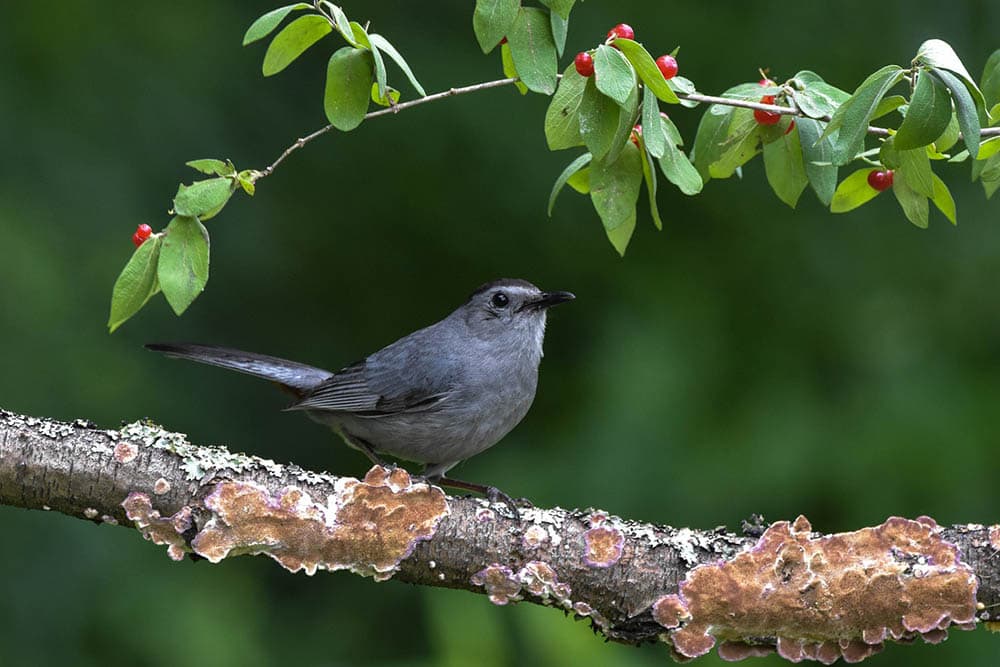
| Body Length: | 7–8.5 inches |
| Distinguishing Characteristics: | Plain gray body |
The Gray Catbird has a plain grey body with no distinguishing characteristics except for a small black cap. It has a long tail that it likes to hold down, which gives it a hunchback appearance. It’s a secretive bird that’s reluctant to fly in open areas.
9. Dark-Eyed Junco

| Body Length: | 4.5–5.5 inches |
| Distinguishing Characteristics: | Plain gray body |
Pennsylvania is one of the few lucky states to have the Dark-Eyed Junco as a permanent resident. They like to live in pine spruce and fir trees in dense forests. They get most of their food hopping on the ground and scratching at leaf litter to find insects and seeds.
10. Common Grackle
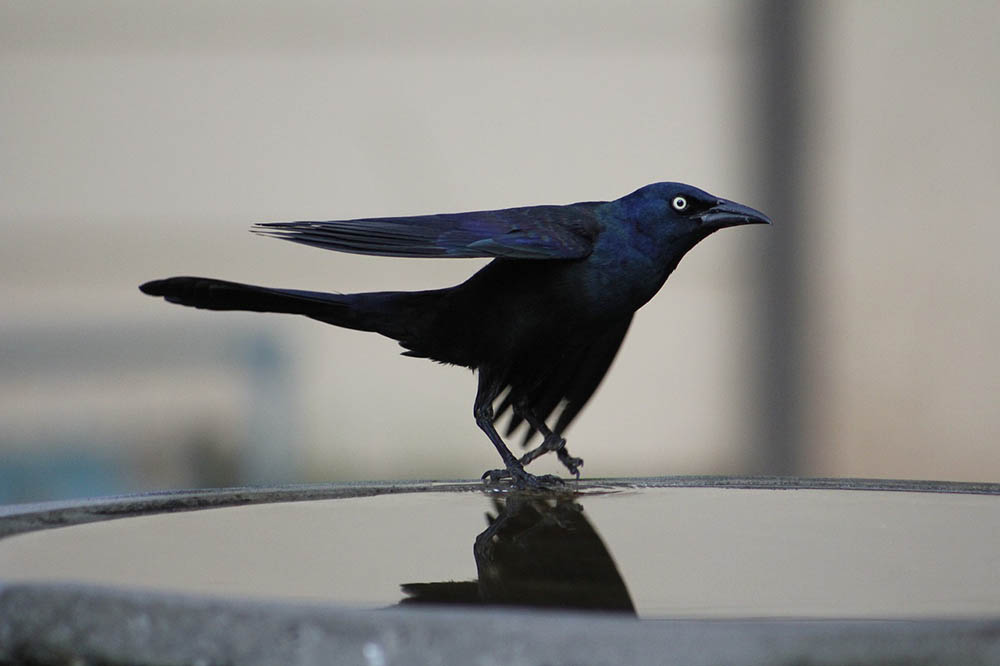
| Body Length: | 11–13 inches |
| Distinguishing Characteristics: | Large size, long legs |
The Common Grackle is a large bird that you can find in Pennsylvania all year long. These birds often come to bird feeders and will push other birds out of the way. But they prefer to spend time on the ground, so they will usually allow smaller birds to remain at hanging feeders so the seed will fall down to them.
11. Black-Capped Chickadee
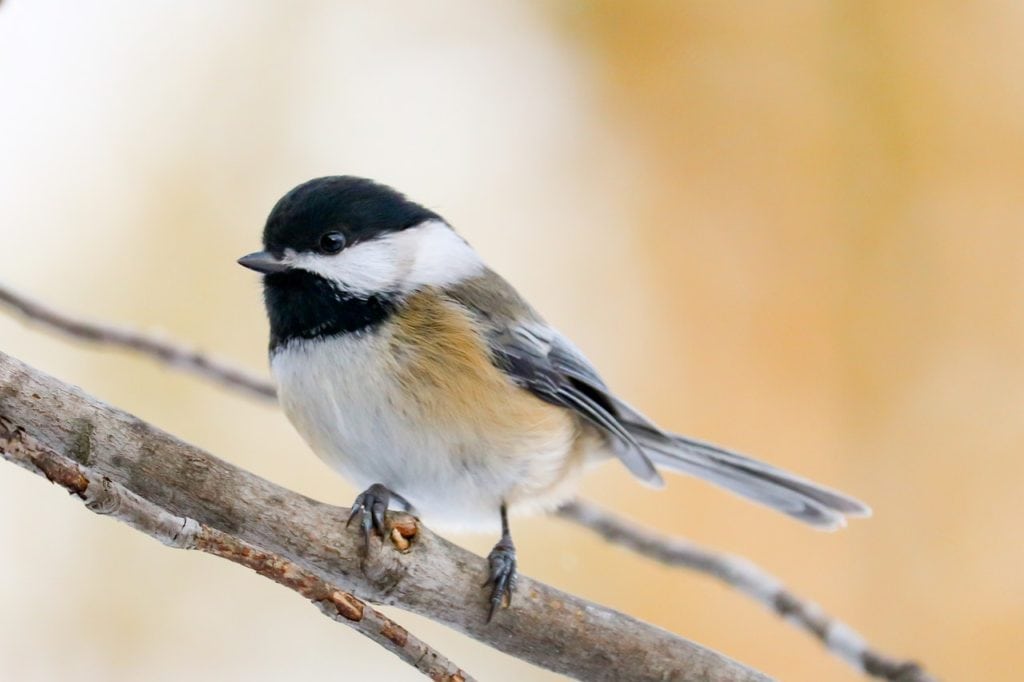
| Body Length: | 6.3–8.3 inches |
| Distinguishing Characteristics: | Black cap and throat |
The Black-Capped Chickadee is a popular songbird in Pennsylvania, and it’s easy to find almost anywhere. These birds like to live at the edge of the forest where it’s easy to hunt, and they’re communal, so they tend to live in large flocks.
12. Carolina Chickadee
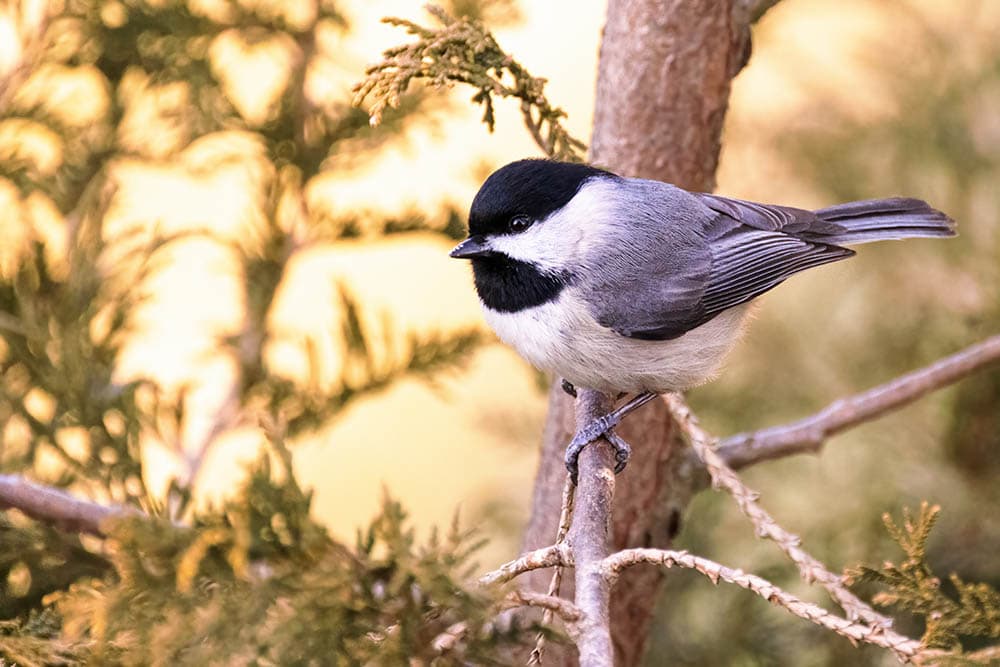
| Body Length: | 4.25 inches |
| Distinguishing Characteristics: | Small size, spherical body, black cap |
The Carolina Chickadee looks extremely similar to the Black-Capped Chickadee with its black cap but is much smaller. They are extremely inquisitive birds that you will often find in parks with large trees.
13. Eastern Bluebird
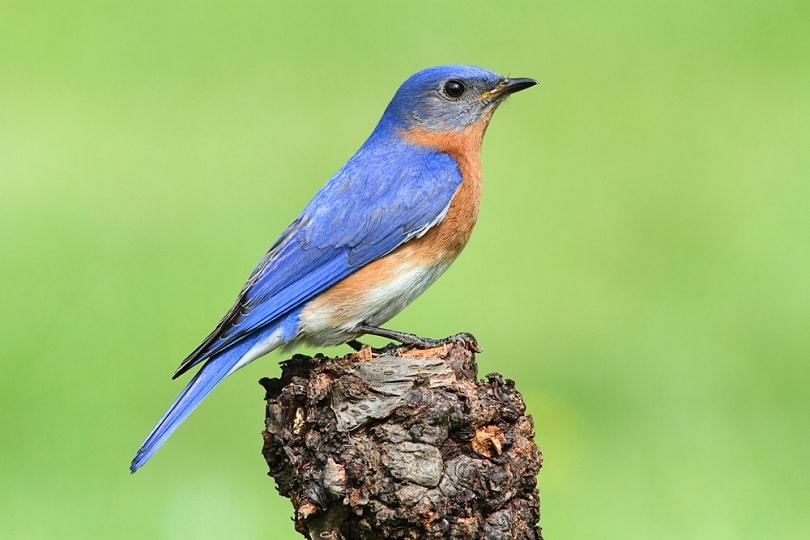
| Body Length: | 9.8–12.6 inches |
| Distinguishing Characteristics: | Blue back and a large belly |
The Eastern Bluebird is a fun bird to find when you’re bird watching in Pennsylvania because it’s highly attractive with its blue back and plump body. It can also have a rusty or brick red color on the throat and chest. These birds like to sit on posts out in the open, so finding them on a farm is easy.
14. Common Yellowthroat
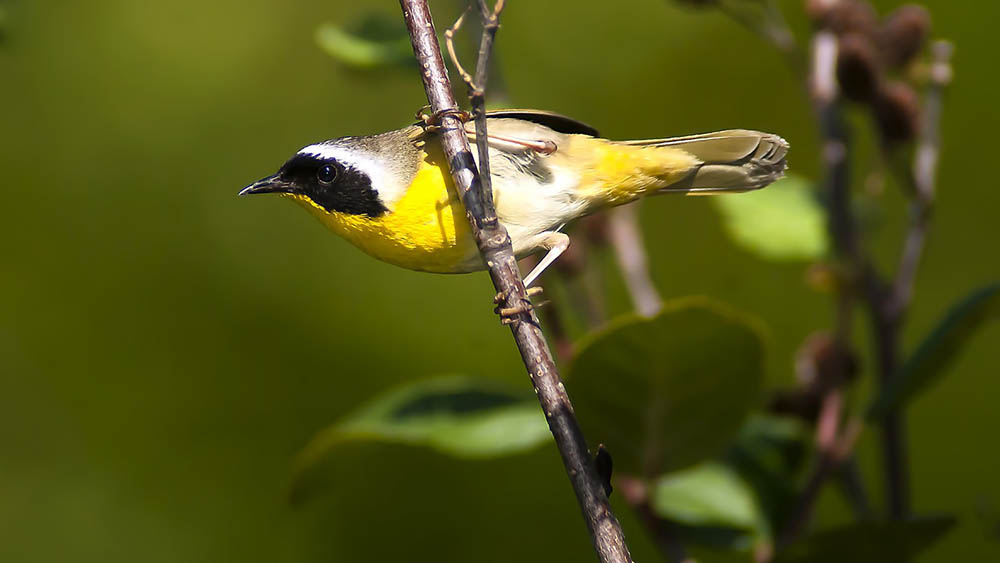
| Body Length: | 4.3–5.1 inches |
| Distinguishing Characteristics: | Bright yellow body and black mask |
The Common Yellowthroat is a small but colorful songbird. It has a bright yellow belly, and the males have a black mask. The feathers on the back and tail also have a yellow tint, and the tail is quite long. You can find these birds in open areas with plenty of thick, low-lying vegetation.
15. Barn Swallow

| Body Length: | 5.9–7.5 inches |
| Distinguishing Characteristics: | Deep blue and rusty red coloring |
The Barn Swallow is the most widespread type of swallow in the world. It has a deep blue back and head with a rusty red chest and belly. The tail is long and forked, and these birds like to feed as they fly, catching insects mid-air. They are agile flyers capable of quick turns and dives, and you will find them nesting under bridges and in barns or sheds.
16. Indigo Bunting

| Body Length: | 4.5–5.9 inches |
| Distinguishing Characteristics: | Blue male, brown female |
The Indigo Bunting is a small songbird that likes to frequent telephone lines in the summertime, and these birds will come into your yard if you have thistle growing. The males have a bright blue color, while the females tend to be brown, and they usually eat insects, seeds, and berries.
Red Birds in Pennsylvania
17. Cardinal
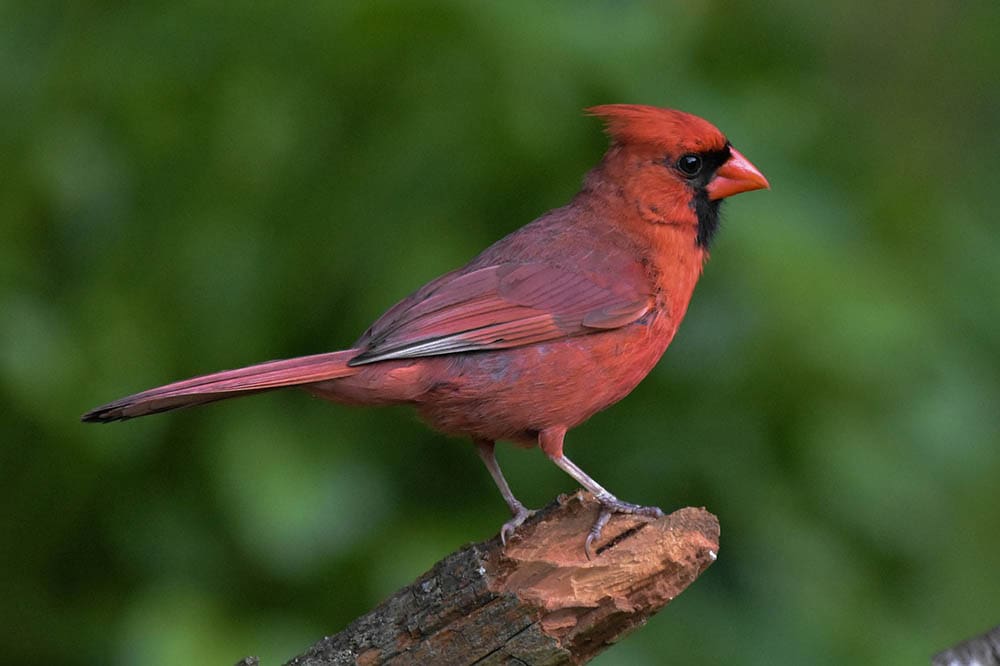
| Body Length: | 8–9.5 inches |
| Distinguishing Characteristics: | Bright red male |
You can find the Northern Cardinal throughout Pennsylvania and much of the eastern United States. The male of the species is easy to distinguish by its bright red body color, raised crest, and a black face mask. The females are slightly smaller and are not as brightly colored, but the Cardinals are among the few songbirds with female singers. These birds do not migrate, so you will be able to find them year-round once you locate a nest, and they mainly eat weed seed, grains, and fruit.
18. Robin
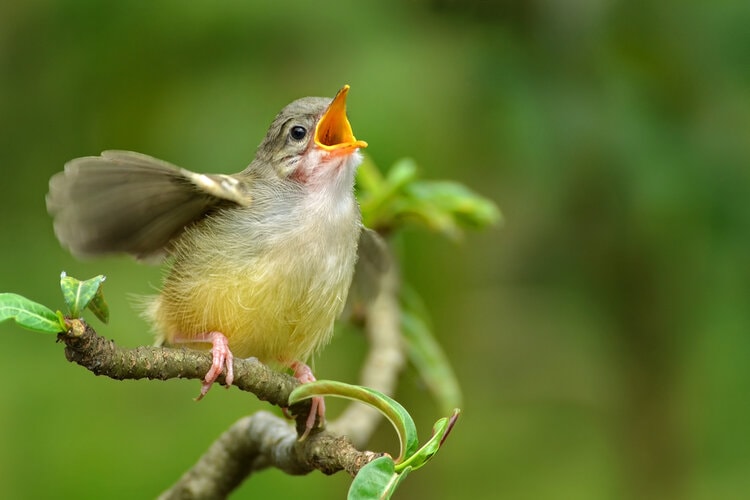
| Body Length: | 4.5–6 inches |
| Distinguishing Characteristics: | Orange chest |
You can find the Robin almost anywhere in the United States, including Pennsylvania. These birds enjoy eating earthworms, and you can find them searching the ground after a rainfall in the summer. Many people start to notice these birds in the spring, but they are there all year long. They spend more time in the trees during the colder seasons.
19. House Finch
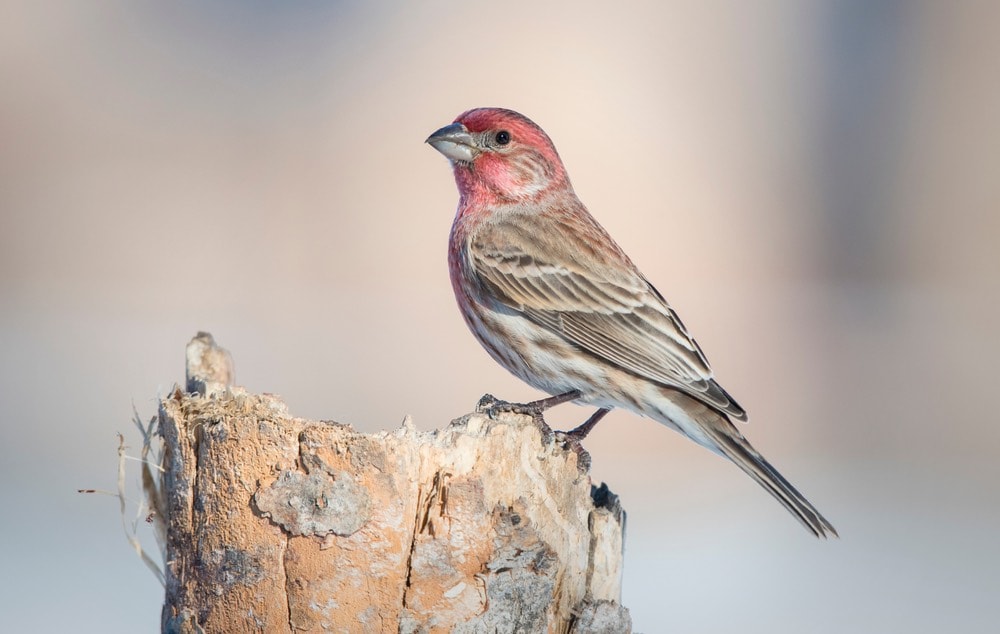
| Body Length: | 6 inches |
| Distinguishing Characteristics: | Red chest |
The House Finch is a red-breasted bird that you can find easily in Pennsylvania. The males can also have a red crest, throat, and rump. These birds are highly adaptable to city life, and the best place to find them is in an area with plenty of buildings and lawns.
20. Red-Winged Blackbird
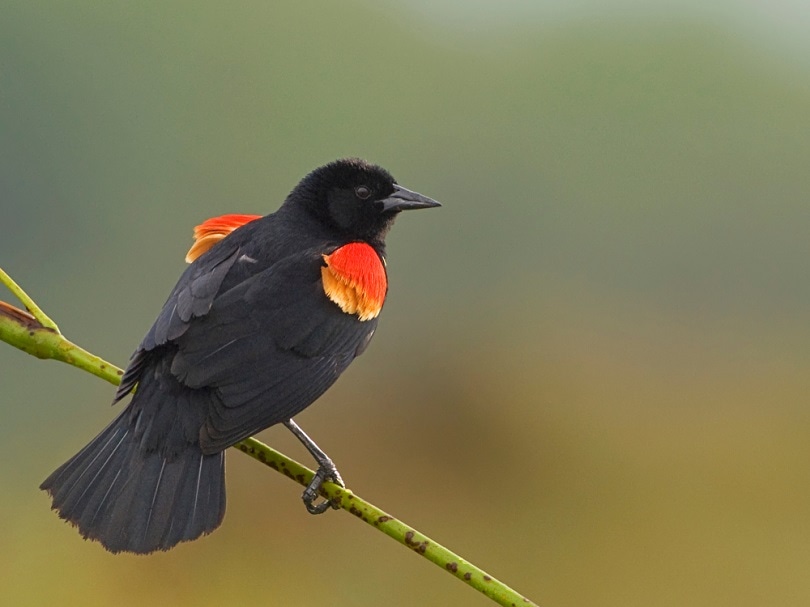
| Body Length: | 6.7–9.4 inches |
| Distinguishing Characteristics: | Black body with red and yellow markings on the wings |
One of the more attractive birds you can find in Pennsylvania is the Red-Winged Blackbird. The male of this species has a black body with a red shoulder patch with yellow trimming. The female also has a red shoulder patch, but its body is brown and white, similar to the Song Sparrow. These birds enjoy marshy waters, and you can frequently find them in water hazards on golf courses.
Brown Birds in Pennsylvania
21. Song Sparrow
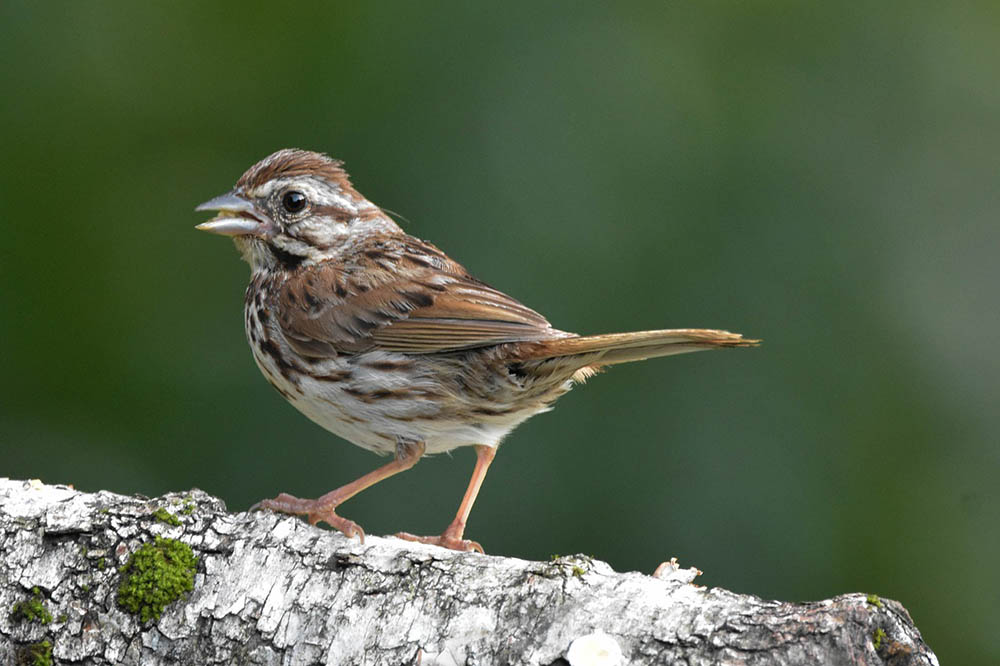
| Body Length: | 4.5–7 inches |
| Distinguishing Characteristics: | Dark streaks on a light chest |
The Song Sparrow is a small bird common in Pennsylvania backyards, where it lives and breeds all year. These birds like low-lying vegetation and tree branches near open areas where they can collect food. These birds love bird feeders, and they are quite intelligent, able to watch other birds to learn about dangerous predators.
22. Carolina Wren
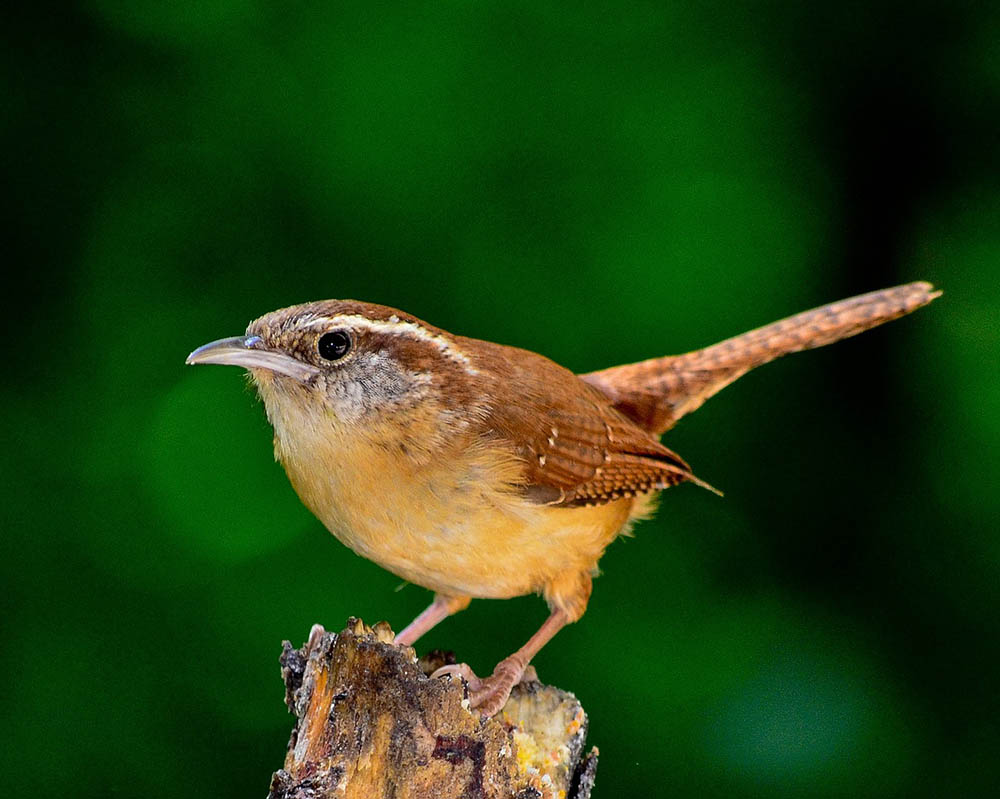
| Body Length: | 4.9–5.5 inches |
| Distinguishing Characteristics: | Brown body, white streak over the eye |
The Carolina Wren is a mostly brown bird with a white throat. These birds like to stay by gardens and other vegetation around Pennsylvania, and you can often see them running up and down tree trunks looking for insects. They are noisy birds that defend their area by singing.
23. House Sparrow
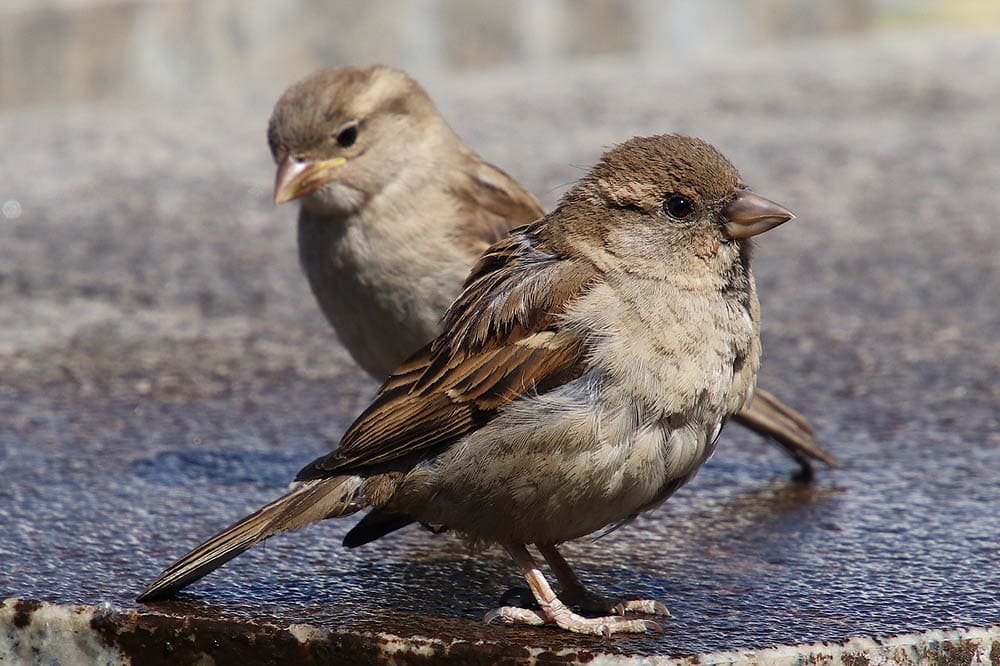
| Body Length: | 5.9–6.7 inches |
| Distinguishing Characteristics: | Round head, black bib |
The House Sparrow is an easy-to-find bird in Pennsylvania with a mostly brown back. The males will have white cheeks with a black bib that helps you tell them apart from the Song Sparrow. These are noisy birds that like to flutter around eaves. It’s also easy to find them near parking lots, where they like to hunt for seeds and insects.
24. White-Throated Sparrow

| Body Length: | 5.9–7.5 inches |
| Distinguishing Characteristics: | Black-and-white face with a yellow spot between the eye and bill |
As the name suggests, the White-Throated Sparrow has a white throat and a striking face pattern with black-and-white stripes and a yellow spot between the eyes and the bill. It has a brown back with a long tail, and it likes to scratch the leaves looking for food. These birds also like to hide out in bushes.
25. Chipping Sparrow

| Body Length: | 4.5–6 inches |
| Distinguishing Characteristics: | Black eyeline, brown cap |
The Chipping Sparrow is a Sparrow type that you can easily find in Pennsylvania. You can easily identify this bird by the black line that moves from the front to the back of the head right through the eye. These birds also have a dark brown cap, and you will find them feeding on the ground and taking cover and shrubs and bushes.
Related Read: Why Can Birds Sit On Power Lines? Can They All Do It?
26. House Wren

| Body Length: | 4.3–5.1 inches |
| Distinguishing Characteristics: | Plain brown color |
The House Wren is one of the most common birds in Pennsylvania, but it’s also one of the blandest, having no noticeable distinguishing characteristics. It’s a plain brown bird with a short tail that you can find easily in the summer as it energetically hops and flies through your yard. You will see it in the winter, too, but not as often.
Pennsylvania Woodpeckers
27. Downy Woodpecker

| Body Length: | 5.5–7 inches |
| Distinguishing Characteristics: | Black-and-white body, red spot on the top back of the head |
The Downy Woodpecker is the smallest of all North American woodpeckers, and it’s fairly easy to find in Pennsylvania. It has a white bar above and below its eye. It also has a red spot on the back of its head, near the top.
28. Red-Bellied Woodpecker
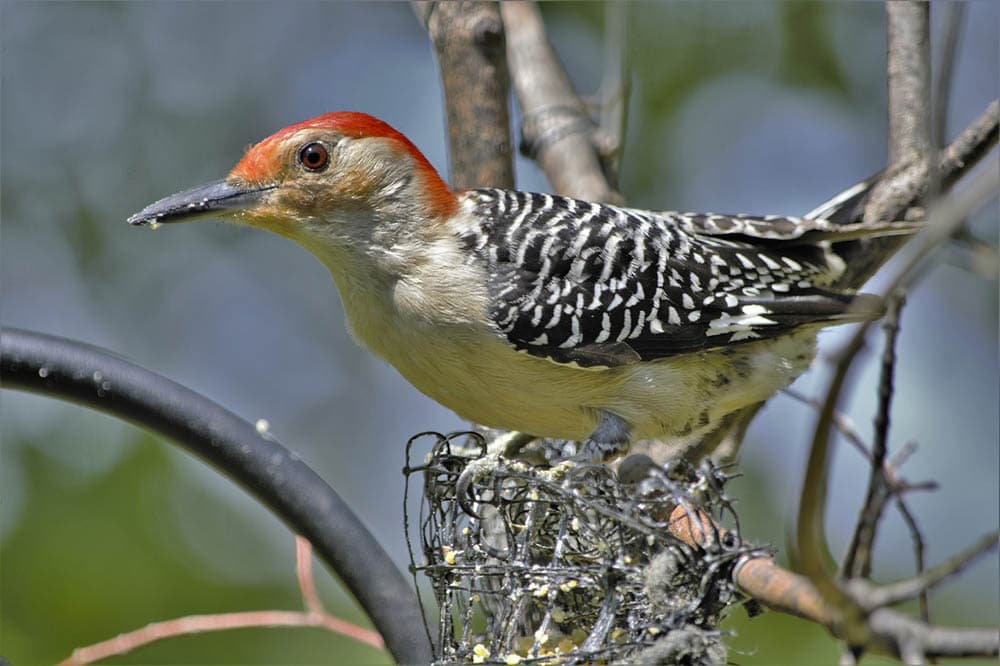
| Body Length: | 8–9.4 inches |
| Distinguishing Characteristics: | Red head, grey face, pink belly |
The Red-Bellied Woodpecker is a popular bird in the eastern United States, including Pennsylvania. It has a grey face with red plumage on top and black-and-white bar patterns on its back. You can usually find these birds in dense forests near streams.
29. Northern Flicker
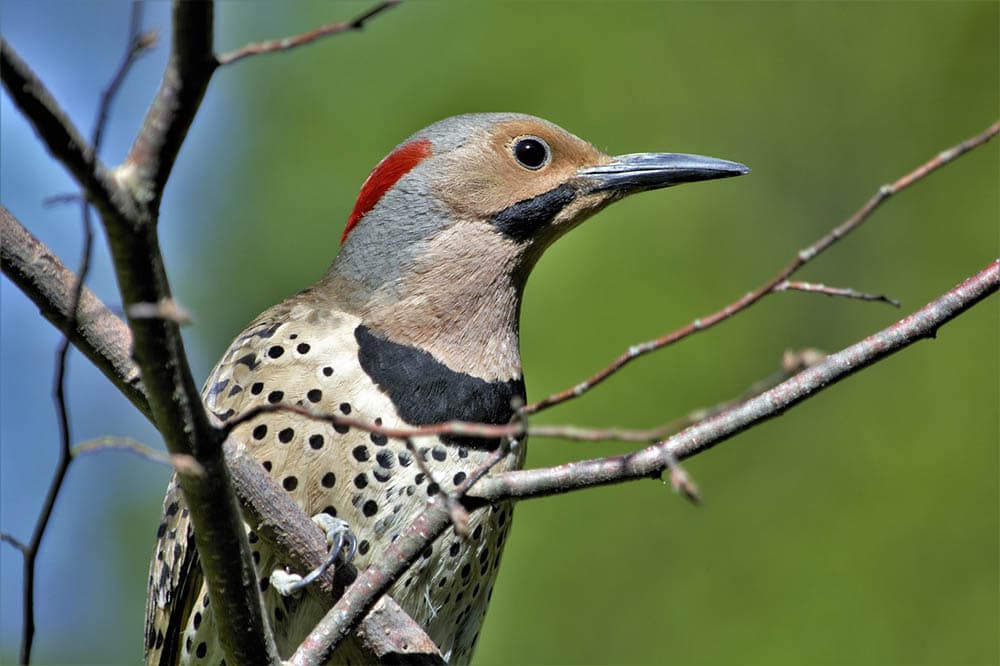
| Body Length: | 11–14 inches |
| Distinguishing Characteristics: | Long beak, black bib, spotted belly |
The Northern Flicker is a large woodpecker that you can find in Pennsylvania. It is easy to spot from a distance by its spotted belly, which is quite different than many other birds. It also has a long bill and a bright red nape. The underside of the wings will also be tinted yellow. These birds spend most of their time on the ground and like to look for open areas near trees.
30. Hairy Woodpecker
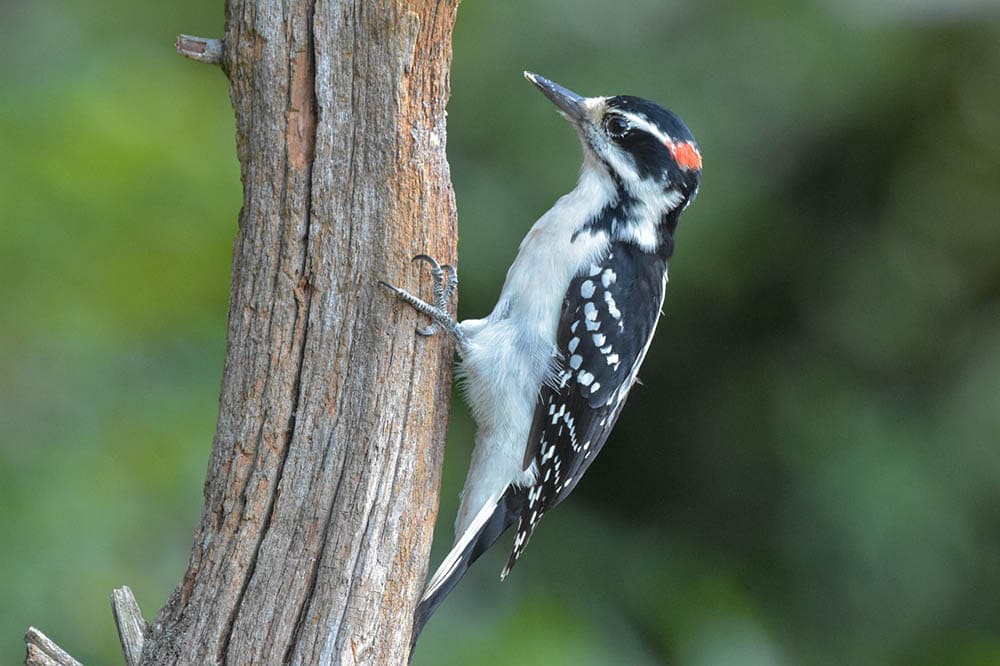
| Body Length: | 8.52–9.25 inches |
| Distinguishing Characteristics: | Black wings with white spots, red spot on the head |
The Hairy Woodpecker has a similar appearance to the Downy Woodpecker but is a little larger. This bird has black wings with white spots, the face has a white stripe above and below the eye, and there is a white spot on the head. These birds like to stay along main branches, and they may also look for food in fallen tree trunks or on the ground.
- Related Read: 30 Common Backyard Birds in Tennessee (With Pictures)

In Conclusion
There are quite a few birds in Pennsylvania that are easy to find in your backyard. While the woodpeckers can get annoying, most of the others are pleasant visitors, and you can bring them around more often by putting a few bird feeders around your house. Our favorites are the Blue Jay and the Cardinal, but we like to watch the different sparrows at the feeder each morning too.
Featured Image Credit: JackBulmer, Pixabay
Table of Contents
- The 30 Most Common Backyard Birds in Pennsylvania
- Pennsylvania Songbirds
- 1. Blue Jay
- 2. Mourning Dove
- 3. American Crow
- 4. American Goldfinch
- 5. Tufted Titmouse
- 6. European Starling
- 7. White-Breasted Nuthatch
- 8. Gray Catbird
- 9. Dark-Eyed Junco
- 10. Common Grackle
- 11. Black-Capped Chickadee
- 12. Carolina Chickadee
- 13. Eastern Bluebird
- 14. Common Yellowthroat
- 15. Barn Swallow
- 16. Indigo Bunting
- Red Birds in Pennsylvania
- Brown Birds in Pennsylvania
- Pennsylvania Woodpeckers
- In Conclusion
About the Author Robert Sparks
Robert’s obsession with all things optical started early in life, when his optician father would bring home prototypes for Robert to play with. Nowadays, Robert is dedicated to helping others find the right optics for their needs. His hobbies include astronomy, astrophysics, and model building. Originally from Newark, NJ, he resides in Santa Fe, New Mexico, where the nighttime skies are filled with glittering stars.
Related Articles:
Monocular vs Telescope: Differences Explained (With Pictures)
10 Types of Hummingbirds in Arkansas (With Pictures)
8 Types of Hummingbirds in Nebraska (With Pictures)
5 Types of Hummingbirds in Idaho (With Pictures)
3 Types of Hummingbirds in Mississippi (With Pictures)
8 Types of Hummingbirds in Kansas (With Pictures)
5 Types of Hummingbirds in West Virginia (With Pictures)
5 Types of Hummingbirds in Ohio (With Pictures)
